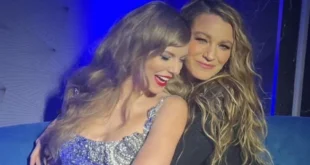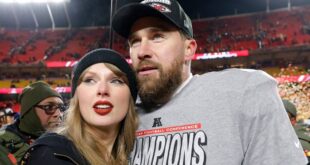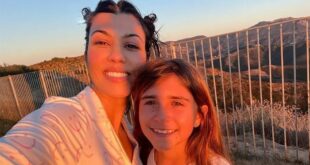The story of Kate Middleton’s disappearance is haunted by Meghan Markle
As intrigue mounted last week over a then-missing, now recently appeared Kate Middleton and her Photoshopped picture, British-owned tabloids directed their ire toward a familiar target: Meghan Markle.
To an unpracticed observer, it would be difficult to blame the disappearance of Princess Kate from the public eye on her sister-in-law, but the tabloids are nothing if not resourceful. Page Six reported that Prince Harry and Meghan’s inner circle were mocking Kate’s botched Photoshop and sneering that Meghan would never have made such a mistake. Meanwhile, Meghan and Harry, alleged the Daily Mail, were nothing but a pair of hypocrites. They had used Photoshop on their own pregnancy announcement pictures, and so had no leg to stand on when it came to criticizing Kensington Palace for Photoshopping Kate’s Mother’s Day/proof-of-life picture.
Harry and Meghan swiftly went on the defensive and denied it all. The only alteration they had made to their photo was to render it in black-and-white, they announced, and they never said Meghan wouldn’t have made that kind of mistake. (Though let’s be real: with the amount of time Meghan spends curating her Instagram? She wouldn’t have.) The couple has otherwise declined to comment on the controversy, which is probably wise. There’s little chance of a win for them in getting themselves involved.
In a sense, though, they always were involved. The story of Kate’s disappearance took off to begin with because very online fans of Meghan sat up and took notice. As royals reporter Ellie Hall laid out in Nieman Lab at the beginning of March, early conversation about Kate’s disappearance from the public scene was driven by pro-Meghan and Harry accounts in the royal-watcher internet communities where royal haters and fans alike watch and discuss the movements of the royal family with avid fascination.
“It’s one of the points that keeps coming up in the online discourse — the apparent hypocrisy between the palace and the UK media’s treatment of each woman,” Hall explained. “People are comparing the hands-off, privacy-first stance that the press is taking toward Kate with their attitude toward Meghan and the stories that were written about her while she was on maternity leave. … There’s also a definite feeling among some people that Kate should have to go through this social media and press speculation because Meghan went through it, it was worse for Meghan, and when she complained, people told her to suck it up.”
Meghan is part of the story of Kate’s disappearance because Meghan and Kate have been treated as each other’s opposites and foils ever since Meghan and Harry first got engaged. Their shifting treatments at the hands of the monarchy and the press has come to symbolize the question of what Britain’s values and priorities should be. Kate and Meghan themselves have come to symbolize different ways of being women, different ways of being royal, different ways of being famous — and, most fraught of all, different ways of responding to the problem of what happened to their husbands’ mother, Princess Diana.
Since her death in 1997, Diana has symbolized the best and the worst of the British monarchy. She symbolizes the possibility of making real connections between subjects and people, of moving away from stultifying tradition toward something more grounded and emotionally open, all the while embodying a glamorous royal ideal. She symbolizes, also, a dangerously destabilized monarchy marred by tawdry tabloid gossip, and a human sacrifice killed partially by the public’s unending appetite for her, partially by the indifference of the stolid royal infrastructure.
“It could never happen again,” writes Tina Brown in her 2022 book The Palace Papers of the royal consensus after Diana’s death. The it that could never happen was Diana: not another celebrity royal stealing light away from the institution; not another woman eaten alive by the torments of her position. Kate and Meghan were, in one way or another, supposed to ensure that it would remain forestalled. It was always an impossible task.
“A small clash of styles”
:no_upscale()/cdn.vox-cdn.com/uploads/chorus_asset/file/25347956/998534018.jpg)
As soon as Meghan Markle and Prince Harry got engaged in 2017, observers started to keep an eye out for the ways in which Meghan and Kate would get pitted against each other in the tabloids. It felt inevitable.
“I anticipated that the narrative would change to ‘sisters at war’ after a honeymoon period,’ royal biographer Andrew Morton said of Meghan and Kate’s relationship in 2018. “Why was it predictable? Because young royal sisters-in-law, as it was with Diana and Fergie [Sarah Ferguson, Duchess of York], are set up for failure. They’re compared to one another incessantly — in what they wear, how they behave — in a way that never happens to royal men.”
In his memoir Spare, Harry describes the moment he first realized that his future wife and his sister-in-law would be set up for a feud. It was shortly after the first public appearance of the four hot young royals — Harry, Meghan, Will, and Kate. The event was thought to be successful at first, Harry writes.
“Days later, controversy. Something about Meg showing support for #metoo, and Kate not showing support — via their outfits? I think that was the gist, though who can say? It wasn’t real,” he says of the ensuing tabloid coverage. “But I think it had Kate on edge, while putting her and everyone else on notice that she was now going to be compared to, and forced to compete with, Meg.”
Harry allows that there was a real difference in personality between Meghan and Kate. At their first meeting, Meghan was barefoot in ripped jeans, while Kate was “done up to the nines.” Later, backstage before their group event, Meghan asked to borrow Kate’s lip gloss, and Kate acquiesced but “grimaced” at the overfamiliarity. “Small clash of styles, maybe?” Harry suggests. “But it left a little mark. And then the press sensed something was up and tried to turn it into something bigger.”
The “small clash of styles” Harry identified between Meghan and Kate became the basis for the binary that would become bigger than both of them: warm, casual Meghan who does not know her place versus cool, restrained Kate who knows protocol inside and out.
“Witness how she [Meghan] and Harry were utterly at ease with the crowd, high-fiving, hugging, happy and relaxed,” wrote the Daily Mail in 2017. “I hesitate to say this, but they made William and Kate look a mite formal and po-faced in comparison.”
On the other hand, per the Daily Mail in 2020: “A froideur descended between the two women, one [Meghan] determined to do things her way, regardless of the rulebook, the other [Kate] finding her offer to help and be a guide firmly rejected.”
Every possible biographical fact about the pair was dispatched to reinforce the binary. There was the issue of their professional backgrounds. Meghan entered the royal family coming off a successful career as an actress, while Kate had put her own career on hold after graduating from university to allow her the flexibility to date William: Being a member of the royal family has been de facto her job since college. Depending on who was talking, this made Meghan either refreshingly independent or entitled, and Kate either a well-seasoned royal or a passive unfeminist throwback.
“I think there was always a sense that Meghan felt she was a self-made woman whereas Kate hadn’t really had her own career,” an unknown source told Page Six, in a 2023 article suggesting that Meghan hadn’t understood that she was supposed to “play second fiddle” to William and Kate, since they outranked her in precedence.
The two duchesses’ clothes, too, became part of the binary. Both Meghan and Kate are tall and thin and conventionally attractive, with upscale tastes in fashion, but their tastes are different enough to feed the narrative. The new story became that Kate was either classy or drab, while Meghan was either glamorous or trashy.
In the classy versus trashy column: “Kate’s dress sense oozes sophistication,” explained the Sun in 2017. “She’s rarely seen in dresses with hemlines that fall above the knee, but she does enjoy wearing garments that are structured and fitted.” On the other hand, “Meghan Markle has worn an array of racy clothes for her acting roles, including figure-hugging dresses and shapely leather skirts. Despite this, the actress is often seen in casual attire. Loose T-shirts, denim and trainers are among the clothes she can be seen in on a day-to-day basis.”
In the drab versus glamorous column: The same year, the Daily Mail compared a “tired” Kate, at the time pregnant and struggling with hyperemesis, with “the bedazzling Meghan.” Kate’s “blue-and-white frock was pretty but mumsy, as if it had come from a 1989 Laura Ashley catalogue.” Meanwhile, Meghan’s “chic” white coat “accentuated her gym-toned slim figure as her mane of black hair shone in the winter sun.”
As time went on, coverage of Meghan grew ever more inflected with racist overtones, and the tabloids positioned Kate ever more steadily as the winner of the imagined war between the pair. As the narrative was set, it became possible, as an article by Ellie Hall showed, for Kate and Meghan to perform the exact same actions and still fit the now-established binary. Kate “tenderly cradles her baby bump,” while a pregnant Meghan has experts wondering if her hands are always on her bump out of “pride, vanity, acting — or a new age bonding technique?” Kate “requested her favorite scented candles and toiletries from luxury fragrance brand Jo Malone be delivered to scent the Abbey” at her wedding, while “‘Dictatorial’ bride Meghan wanted air fresheners for ‘musty’ 15th-century chapel” at her own. The binary has a life of its own now, and it doesn’t need to rely on anything so precious as the way the individual people who it is ostensibly about actually behave.
That’s because this tabloid narrative has less to do with who Meghan and Kate actually are than it has to do with what the public has decided they symbolize. Kate means the monarchy carrying on as the shiniest and most polished version of its conventional self, a clear line from Queen Elizabeth through to the future Queen Kate, always smiling, always dutiful, always there. Meghan means the monarchy changing, evolving, in potentially threatening ways. Embracing a princess of color. Embracing Hollywood-style celebrity, with its attendant informalities and intimacies. Talking about your feelings in public. Getting a little California.
Both imagined futures for the monarchy have their strengths, but for the tabloids’ purposes, what’s more important is that they both have their weaknesses, too. There is always a way for one of the women in the binary to be losing — to be too progressive or too conservative, too boring or too flashy. It is impossible to ever truly win. We can tell that from looking at history.
Before Meghan, the promise of a newer, warmer monarchy used to be the one embodied by Princess Diana. Diana’s innovations, as a review of her brother Charles Spencer’s new book put it, were at the heart of “the central story of Britain in recent years” — namely, “the clash between the wounded, Californian inclinations of Diana … and of Meghan and Harry, and the unswerving Keep Calm and Carry On of Queen and Crown.”
Kate, it goes without saying, is a Keep Calm and Carry On sort of lady. Which is why before Meghan and Harry ever met, Kate’s primary foil was the ghost of her dead mother-in-law.
“She appears precision-made, machine-made”
:no_upscale()/cdn.vox-cdn.com/uploads/chorus_asset/file/25347963/headshots_1711037583203.jpg)
Diana was, for a time, the most popular member of the royal family. She was also the messiest. Her divorce from Prince Charles shattered royal precedent. She openly spoke about Charles’s affairs, her own eating disorder, and her history of self-harm. The heat of her celebrity made the royal family look stiff and cold; the scandal of her mistreatment made them look tawdry. The public’s fascination with her was so intense that, in the end, it killed her. Diana died in 1997, at the age of 36, after her car crashed while she was being tailed by paparazzi.
William and Kate married in 2011, 14 years after Diana’s death. At the time, there was still a palpable sense of guilt to the way people wrote about Diana, a feeling that she had been done wrong by. Kate was to be her redemption.
“The future Queen Consort,” wrote Tina Brown in The Palace Papers, summarizing the queen’s view on William and Kate’s marriage, “was, unlike the child-bride Diana, road tested in resilience as well as royal life.” Kate could not be destroyed by royal life as Diana was because Kate was coming into it as an adult. She knew what she was getting into, and she had proven she could bear up under the pressure.
For some onlookers, Kate’s evident suitability for the role of future queen consort, her dissimilarity to Diana, was its own sort of tragedy, suggestive of a vicious repression of personality. “Kate seems to have been selected for her role of princess because she was irreproachable: as painfully thin as anyone could wish, without quirks, without oddities, without the risk of the emergence of character,” wrote Hilary Mantel in 2013. “She appears precision-made, machine-made, so different from Diana whose human awkwardness and emotional incontinence showed in her every gesture. Diana was capable of transforming herself from galumphing schoolgirl to ice queen, from wraith to Amazon. Kate seems capable of going from perfect bride to perfect mother, with no messy deviation.”
Meghan and Kate each have one of Diana’s rings. Kate has her engagement ring, the massive sapphire sparkler that appeared to be so pointedly missing from the altered Mother’s Day photo. Meghan has the ring Diana got to replace her engagement ring after she divorced Charles and left royal life behind: an aquamarine ring, with the stone a present from a friend of hers. Another way of saying this is that Meghan got the ring of freedom and Kate got the ring of duty — or, perhaps, that Meghan got the ring of royal disillusionment and Kate got the ring of royal promise.
Meghan was a perfect foil for Kate in part because she could be made to embody the parts of Diana that were messy and human: both her warm way with a crowd and her emphatic insistence that life in the royal family was too cold to be survived. Kate, in turn, could be left to embody the dream of Diana as the public at first believed she would be. She was a princess standing perfect and untouchable in her enormous wedding gown as she tumbled out of the carriage in front of Westminster Abbey. Kate could embody the fairy tale because she was never going to complicate the happy ending.
The theories and speculation that have flared over Kate’s disappearance are startling in part because they are Diana all over again, and not the fairy-tale sapphire ring Diana. The meta-story of Kate’s disappearance has spread to include William’s alleged affair with Rose Hanbury, a sinister echo of Charles’s years-long relationship with Camilla Parker-Bowles when he was still married to Diana. There are other similarities, too.
An inner-circle royal reporter drew parallels on GB News between Kate’s health ailments and Diana’s mental health struggles. “He [William] goes back to his own mother, when he became what she called the man of the house, and he had to deal with her mental illnesses,” said Angela Levin, Queen Camilla’s official biographer, with somewhat ambiguous implications. “Here, he’s a mature man, and he will know that his priority is to look after his wife.”
An infamous Tatler profile of Kate from 2020 noted that “it seems that with years of scrutinising public pressure Kate has become perilously thin, just like — some point out — Princess Diana.” Diana suffered from an eating disorder, and the Tatler profile sparked rumors that Kate did, too; rumors which caught fire as the public speculated over Kate’s health in the wake of her surgery.
These rumors are in a way a development of the cracks in Kate’s glacial composure that some observers were beginning to observe as early as the royal wedding. “In [Kate’s] first official portrait by Paul Emsley, unveiled in January, her eyes are dead and she wears the strained smile of a woman who really wants to tell the painter to bugger off,” Mantel wrote. “One critic said perceptively that she appeared ‘weary of being looked at.’”
If the controversy of Kate’s disappearance proves anything, it is that members of the royal family are not allowed to become “weary of being looked at.” That is the deal they have made: The taxpayers fund their lives, and in exchange royalty provides a royal spectacle, a parade of prim frocks and demure hats at hospital openings and tennis games forever and ever after, amen.
Diana and Meghan both found this bargain unbearable in the end, but Kate — the thinking was — could withstand it. Kate walked into the bargain an adult woman with her eyes open, after 10 years of vicious paparazzi coverage to steel her to the rigors of royal life. Surely she would never crack under the pressure.
In the end, the most shocking thing about the disappearance of Princess Kate is that it suggests the faint possibility that her weariness has well and truly developed into a downright refusal to be looked at, a desire to break the bargain of the royal family. Which is unsettling for a number of reasons, not least of which is: If even Kate Middleton can’t withstand the horrible scrutiny and the pressure of marrying into the royal family — well then, who can?
 Trust World News Solid Entertainment Headlines, Exclusive Movies Updates.
Trust World News Solid Entertainment Headlines, Exclusive Movies Updates.
/cdn.vox-cdn.com/uploads/chorus_image/image/73224085/GettyImages_972331406.0.jpg)



